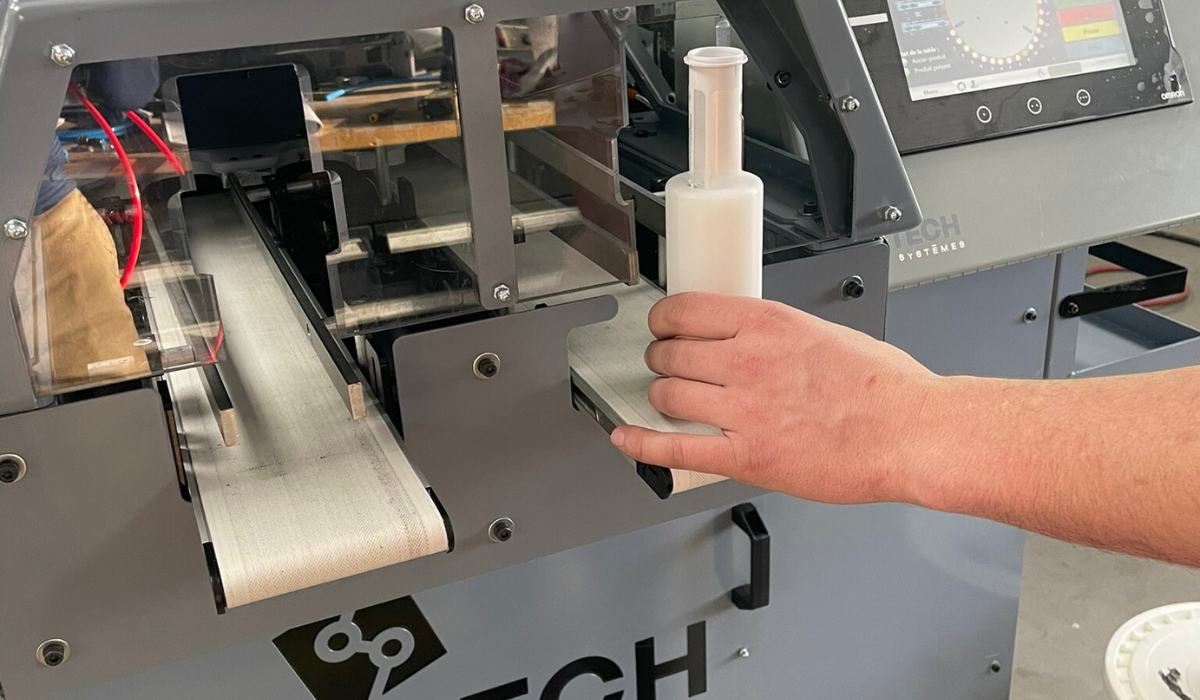The dermocosmetics industry is booming, with growing demand for personalized, high-quality products. To meet this demand, companies are turning to robotics and automation to optimize their production process.
Issues and challenges
Manual production of dermocosmetic products presents a number of challenges:
- Lack of precision: Manual dosing of ingredients can be imprecise, which can affect the quality of the final product.
- Risk of human error: Manual handling of products can lead to mislabeling, contamination or mixing errors.
- Repetitive tasks: Manual production is repetitive.
Robotic automation offers several solutions to these challenges:
- Increased precision: Robots can dose ingredients with great accuracy, guaranteeing the quality and consistency of the final product.
- Reduced risk of error: Automation minimizes human error, resulting in better product quality and less waste.
- Elimination of repetitive tasks: Automation eliminates repetitive tasks, enabling increased production to meet growing customer demand.
A concrete example from a customer
 Revtech Systems recently collaborated with a company specializing in personalized skin care to develop an automated cream dispenser. This innovative system dispenses just the right amount of cream into each jar, guaranteeing optimal product utilization, compliance with the strictest health and hygiene standards, and a considerable improvement in the company's productivity.
Revtech Systems recently collaborated with a company specializing in personalized skin care to develop an automated cream dispenser. This innovative system dispenses just the right amount of cream into each jar, guaranteeing optimal product utilization, compliance with the strictest health and hygiene standards, and a considerable improvement in the company's productivity.
One of the most fascinating aspects of the project is its ability to create unique products for each customer on a single mass production line. Thanks to the automation and digitization of the process, customers' recipes and digital orders are collected and processed by the automated solution. The latter then selects the right ingredients and blends them to create a customized formula to meet each individual's specific needs.
The impact on the customer experience is undeniably positive. Offering each customer a unique, tailor-made product provides an unrivalled sense of exclusivity and satisfaction. This innovative approach builds customer loyalty and boosts sales, generating a concrete return on investment.
The future of dermocosmetics looks bright
The size of the global dermocosmetic skin care market was estimated at $57 billion in 2020, and is expected to grow at a compound annual growth rate (CAGR) of 7.3% from 2022 to 2030, reaching $115.2 billion. In conclusion, robotics and automation are transforming the dermocosmetics sector by offering customers a unique, personalized experience. This evolution is enabling companies to improve customer satisfaction, increase sales and generate tangible return on investment.
Contact our experts for more information on our automation solutions for the dermocosmetics industry.
Sources for trends : How to answer to the Dermocosmetics trend?

